Sauna project 4x6
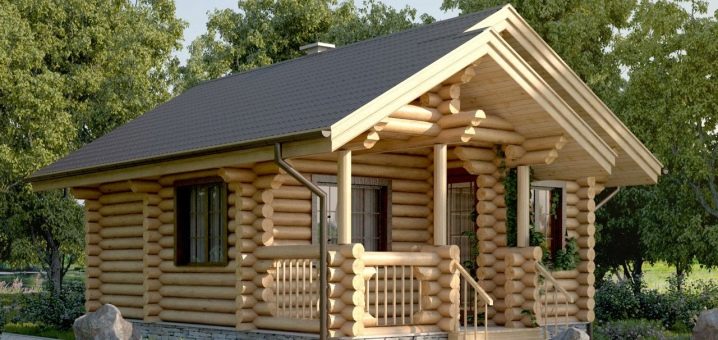
A modern bath is no longer that rustic room in the courtyard "in a smoke", but a real spa salon on your site. Today, almost every owner of a country house or summer cottage can afford to invest in such a relatively small, but healthy structure for the body and soul. The most optimal size is considered to be a 4x6 meter sauna: it will have enough space for both a large family and guests.
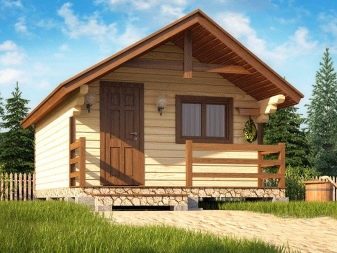

You can do the construction of a bath complex yourself if you have proper experience in this area, or you can order from professionals. The direct participation of the owner in the process of arranging his site requires him to be above average knowledge in the matter of interest. Therefore, before you get your own bathhouse, you need to learn about some of the features.
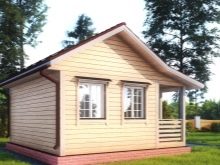
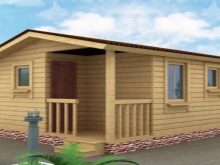
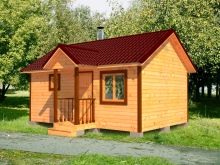
Peculiarities
Baths in our latitudes are almost sacred. Since ancient times, they were built according to certain canons, using the materials most suitable for this purpose, and even now the construction technique has changed little. But new, modern materials appeared, which in some way made cheaper and diversified the process of constructing common places of ablution. Now the best solution for the construction of a bath is to merge the old experience with modern technologies and materials.


Baths of medium size allow you to let your imagination run wild. The future owner, who designs it on his own, or a hired architect can play with the arrangement of rooms, material, appearance. The size of the building 4x6 m can even be suitable for transforming a bath into a small guest house - it will be enough to build on the second floor.
In addition, the building occupies a relatively small area, so there is no strictly defined location for the bathhouse on the site: it can be an extension or a separate structure on either side of the estate.
First you need to decide on the place of construction and, having made an informed decision, lay the foundation on it. This will be a major and key step.
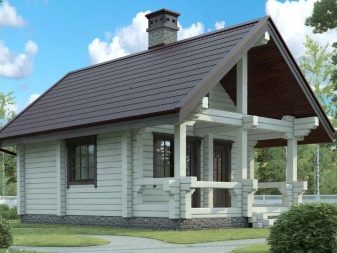
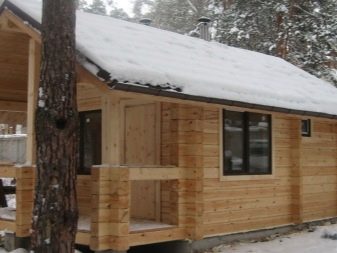
Project
Any bath begins with a project. Before you start building, leveling the ground, looking for materials, you need to decide how the structure will look in the end, and what functions it should perform: whether it will be an ordinary one-story house of 4x6 m or a mini-cottage with a pool of 2 floors. In both cases, it is necessary to draw a diagram of the location of the premises, which will become the best assistant in the construction of a bath, regardless of whether the owner of the site is doing this on his own or has resorted to the help of architects.


It is imperative to take into account the method of water supply to the bath. Usually this issue is solved with the help of a well.
It has its own subtleties and nuances to be encountered during construction:
- the distance of the well from the bath (from fifty meters);
- organization of water discharge;
- winter water supply.
In this matter, it is better to consult with professionals who will suggest the best solution for an urgent problem.


Layout
It is believed that the best size for a bath in the country is 4 by 6 meters. Such parameters open up room for imagination: the building can be made like a country house, part of it is taken under the terrace, turning it into an outdoor recreation area, or you can limit yourself to building a modest bathhouse.
The bathhouse is a very specific structure with a special purpose, therefore, when planning, it is imperative to take into account the height of ceilings and thresholds. Insufficient width and height of the threshold will lead to the "exit" of heat from the steam room and a draft, and the ceiling - to the appearance of excess steam.
The ideal ceiling height is about two meters.
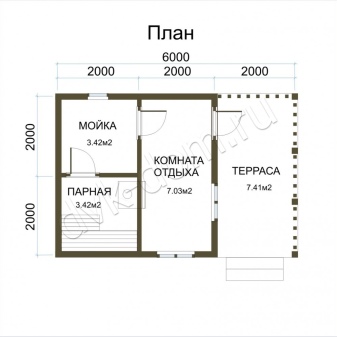
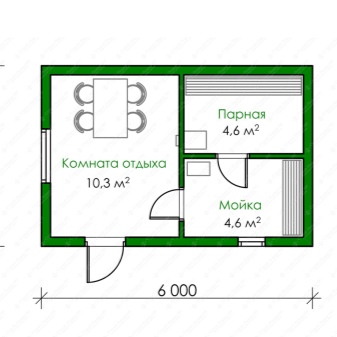
To work out a successful layout, the following factors should be considered:
- the number of people simultaneously in the bath;
- purpose of the room: the square meters of the steam room and the washing department depend on preferences;
- targeted division of rooms;
- competent division of space.
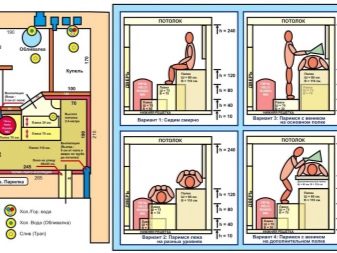

A typical layout project includes the following premises:
- The dressing room is something like a small corridor that can be used as a dressing room; bathing utensils such as brooms and hats are also stored there.
- The steam room is the main place of the bath. Shelves and a stove will be located in it. It is better to place it in the corner of the building.
- Washing room (or shower room) - a room in which there is a shower, sometimes a toilet.
- Rest room - arranged at will and whenever possible. Usually the largest room is assigned to it and furnished with all the necessary furniture: cabinets, sofas, sun loungers, things are left in it. One of the important conditions for this room is the presence of a window.
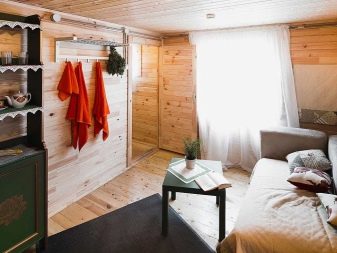
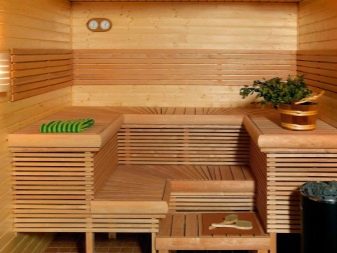

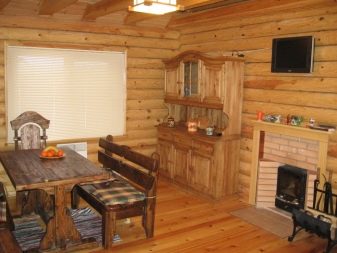
A bathhouse on an individual project may include all of the above premises and have additional ones. For example, sometimes the dressing room and the rest room can be combined or completely abandoned by replacing it with a terrace. However, it will be a more summer option, which is suitable for a seasonal pastime. If a “multi-season” project is being created, it is better to create both indoor and outdoor recreation areas. But this option will require additional space, and instead of 4, it is better to count on 5 meters.
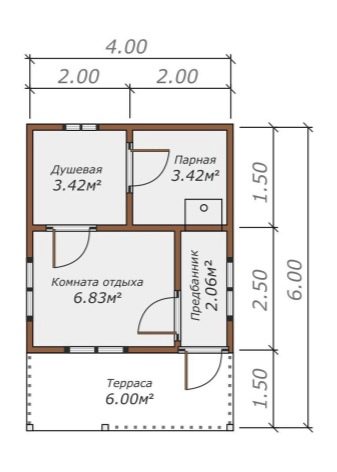
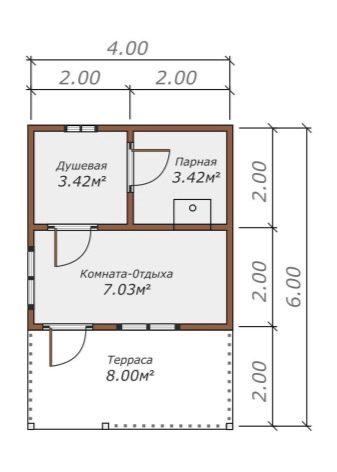
If you have funds and sufficient desire, you can diversify the standard layout by adding a second floor or a veranda. Two floors make it possible to expand the functionality of a bath with dimensions of 6x4 m, since the second floor is being built if one level is not enough to organize all the premises: for example, if you really want to arrange a small pool, and also turn the bath into a house with a bedroom for guests.
A detailed project diagram must take into account absolutely all architectural features and points: from the location of windows and doors to the distances between partitions, and the width and location of rooms should be thought out in advance.
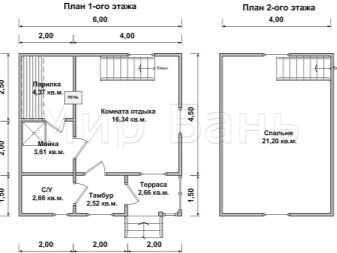
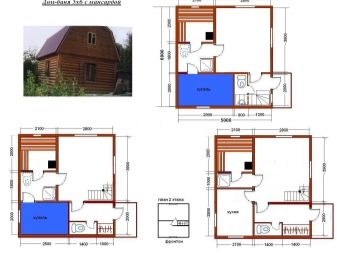
Foundation
This is a mandatory construction phase. Since the bathhouse is a relatively light structure, it is possible to cope without a capital foundation. However, you cannot do without it at all.
When choosing a place for a foundation, it is very important to take into account the condition of the soil. Ideal for building, tight and dry. But this is rarely so lucky, and therefore it is worth considering the composition of the soil and the proximity of groundwater. Depending on these factors, the most suitable foundation in a particular case is selected.
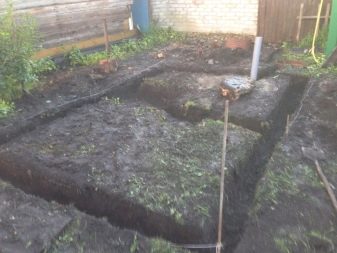
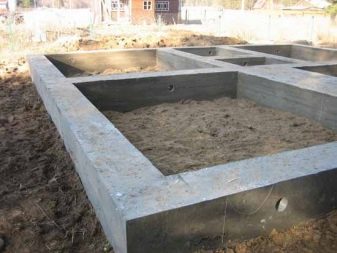
Most often, a strip foundation is laid, the height of which is at least 0.5 m, and the width is 0.3 m. It is suitable for installation on any soil. However, there is much more trouble with it than with other types: it takes longer to install, earthwork and additional work are required before its construction.
But this is not the only option: you can also install the structure on the piles of the screw foundation. This is a very solid base that can support even a two-story structure and can easily handle its weight.
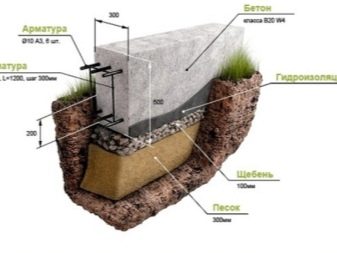
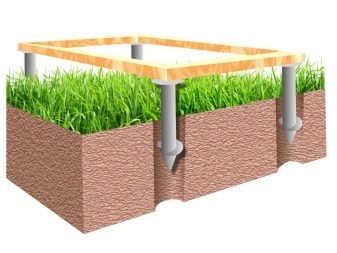
And the third option: a columnar foundation, on which a light bath is just right.
Two meters from the foundation, a drain hole is dug for a sewer pipe. The pipe itself is laid in a trench specially dug for this purpose.
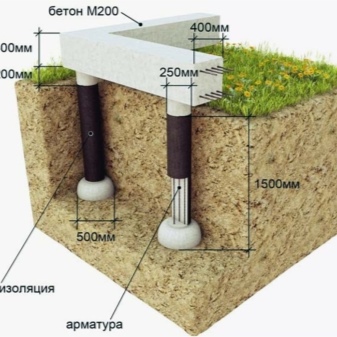

Walls and roof
The bath should be warm even in winter, so the quality of the walls and their insulation during construction are extremely important. Constructed from a log house, they must be thick enough to keep warm inside, so their thickness must be at least 18 cm.Accordingly, the logs used to create the wall should be the same 18 cm in diameter.
You can use not only logs, but also bricks and other materials that the owner will like.
The rest of the work with the walls for their insulation, insulation and impregnation depends on the choice of material.
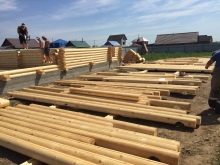


After the walls of the bath are built, they need to be closed as soon as possible. The roof can be pitched, gable or other shape. The type of coverage also depends on preferences: it can be covered with slate, ondulin, tiles. It can be insulated if there is a desire to make an additional room out of it, which can be set aside for a pantry or a room, or you can do without it, leaving it in the attic.
It is very important to make appropriate load calculations when constructing a roof. With their help, it will become clear with which parameters you will have to work, as well as which roof is better to choose.

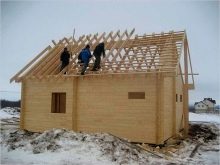
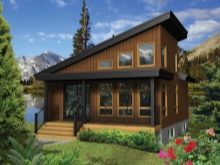
Loads are:
- constants: the weight of the roof itself and the covering;
- temporary: seasonal loads (snow, rain, wind); the weight of the workers;
- natural (they are not typical for our climate, therefore they are rarely taken into account; however, if a summer cottage is being built in a zone with an increased likelihood of a natural disaster, this parameter cannot be ignored).
Since calculations are the most important part in the construction of a roof, it is better to entrust such a responsible matter to a professional.
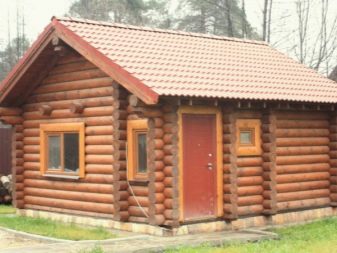
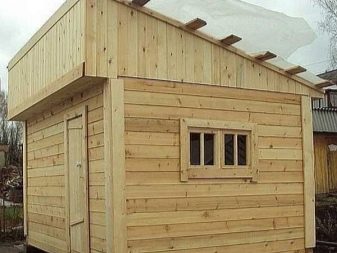

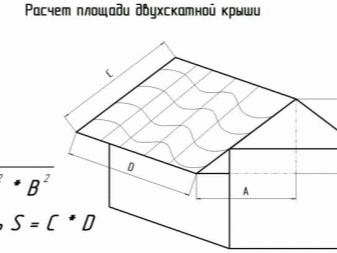
Materials (edit)
When the drawing of the bath is created, and the place for construction is selected, the question of the choice of materials arises. This is a responsible business, since the material used affects the characteristics of the bath, its appearance and interior.
The choice of material, in turn, depends on the taste of the owners, but to a greater extent on the financial situation. But traditions today do not influence decision-making so much, although many materials continue to remain relevant.
Now, in addition to natural materials, it is possible to use aerated concrete, aerated concrete blocks, slabs.
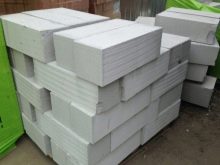
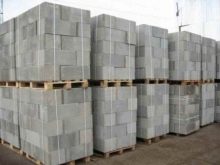
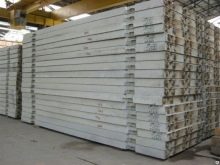
For the construction of a bath, they most often choose:
- wood (timber, rounded logs);
- brick;
- plates;
- other (cinder blocks, gas blocks, expanded clay blocks and others).
Let's consider each of the materials in more detail.

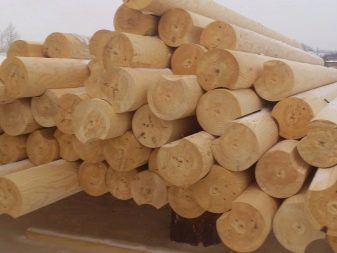
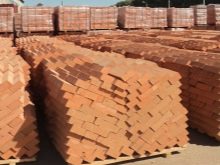
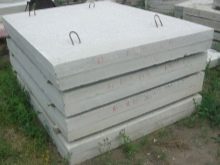
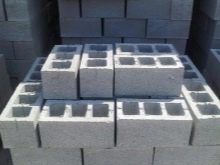
Logs
They are considered the best and historically proven material for the construction of a chopped bath. When choosing logs, you need to pay attention to their quality: any irregularities can affect the thermal insulation properties. Length also matters: if the logs are too long, they will have to be sawed, and the short ones will not work.
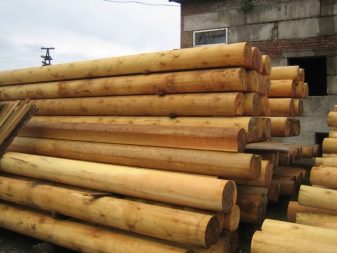
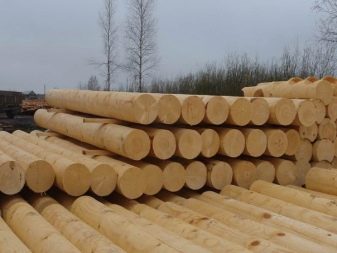
The choice is influenced by the following positive qualities of raw materials:
- aesthetics (the logs do not require finishing, moreover, they bring the appearance of the bath closer to the traditional one);
- environmental friendliness and safety for humans;
- high thermal insulation (wood is a low-heat-conducting material, so you can save on additional thermal insulation of the room);
- durability (with proper care, competent adherence to all rules of construction technology);
- relative cheapness (the cost of wood is relatively low).

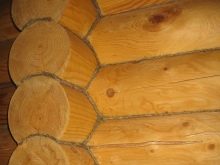
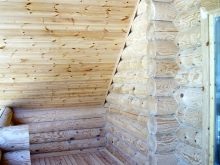
Usually, conifers, such as larch and pine, are used for the construction of baths, but sometimes they can also be mixed with deciduous species: for example, when laying the walls, logs of deciduous trees are laid from below, and coniferous from above. It is believed that the best tree for felling is cedar. But he is also expensive. The cheapest is pine, it has a straight trunk and no twigs.
But larch is more resistant to decay.
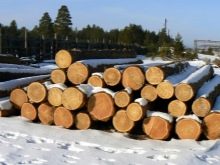

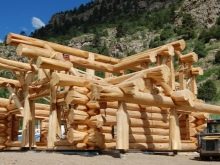
It is necessary to remember about thermal insulation when laying walls. In addition to this property of the logs, caulking is used. For these purposes, they take a rope made of jute or flax fiber, which came into use not so long ago. It is an environmentally friendly material specially created for construction. Non-flammable and safe.
The tree burns well. Therefore, in order to avoid fires and serious material losses, the log house is treated with special impregnations and fire-resistant compounds.Together with the observance of construction techniques and safety standards, the risk of spontaneous combustion can be reduced to zero.
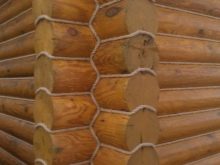
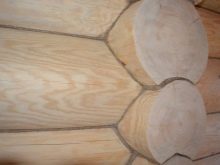
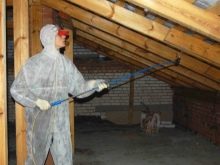
Beams
In addition to a log cabin, you can use a bar. This method is cheaper in construction, but the appearance without improvement leaves much to be desired. And the finishing material is used, and these are additional expenses: financial, labor and time. After all, no one wants their own bathhouse to look somehow scanty and ugly.
Both the timber and the log have almost the same characteristics, therefore, in the choice between one and the other material, the taste preferences and financial situation of the owner are usually decided. This is not to say that one option is more preferable and generally better than the other, so the difference between them is very conditional.
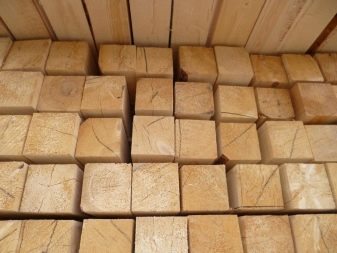
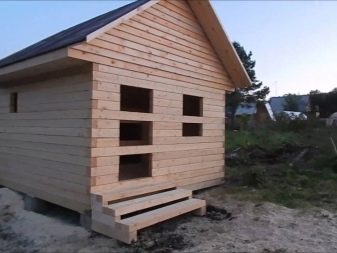
Brick
It is much more difficult to work with brick and stone than with wood, although sometimes you have to - sometimes it so happens that this material is more accessible, and you need to build from it. Like all building materials, it has its own advantages and disadvantages.
Pros:
- keeps a high temperature inside for a long time (it can be maintained during the day);
- durability;
- fire safety;
- availability.


Minuses:
- takes a long time to warm up;
- high thermal conductivity (heat leaves very quickly);
- absorbs and permeates moisture.
In order to compensate to some extent for the disadvantages, it is recommended to sheathe brick walls from the inside with clapboard and add a layer of thermal and vapor barrier material. And to avoid contact with the ground - the foundation is required here.
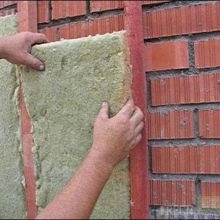

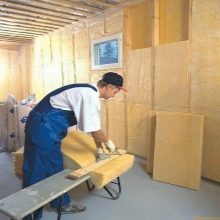
Concrete
Sometimes you have to build from concrete. This, of course, is no match for a bath made of natural materials: you will have to be very puzzled by the ventilation and vapor barrier of the room. If you are not sure about the ideal solution to this problem, then concrete should not be used.
For construction, aerated concrete, expanded clay concrete and foam concrete blocks are most often used.
Material pluses:
- excellent thermal insulation;
- the microclimate of the building is similar to the microclimate of a wooden bath;
- more profitable and more convenient to use than a brick;
- cheapness;
- strength;
- ease of construction - a beginner can handle it;
- the bath will not shrink.
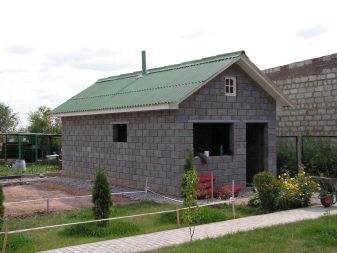
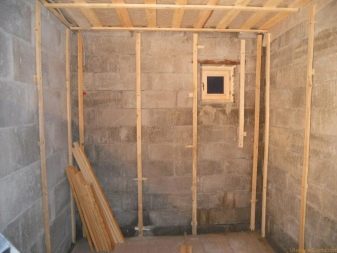
Minuses:
- condensation of material from the inside;
- limiting the height of the building;
- the need for a special antifungal finish (and also against mold);
- eco-friendly, but not like wood.
Concrete can be used not only as a material for walls, but also to make a pool bowl from it, if such is planned in the project.
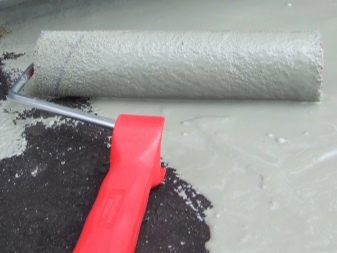
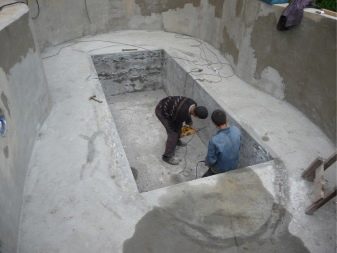
Panels
Not the most popular, but possible option for building a bath. Here, a frame and sandwich panels are used for the walls. It makes it possible to save on the foundation, since the structure is very light and does not shrink.
However, you will have to deal with the internal and external decoration of the bath - despite their properties similar to wood, the panels do not look as beautiful as we would like.
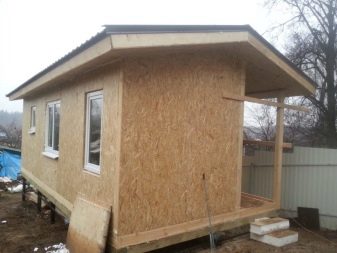
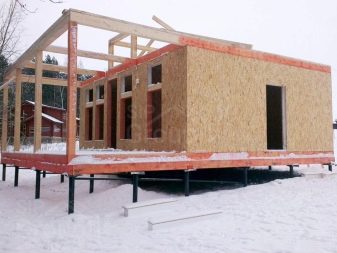
Other
Today, a bathhouse can be built not only from wood, but even from artificial materials: gas silicate blocks, cinder blocks and gas blocks. Even a house can be built using them. Such "artificial" baths have their advantages and disadvantages.
Advantages:
- non-toxicity;
- moisture resistance;
- low weight of the material;
- high thermal insulation.
The construction of such materials does not require screw piles in the foundation due to its lightness (unless the soil is muddy). However, there is a need for additional finishing of the facade of the building to give it a presentable look - “bare” blocks do not look very attractive.
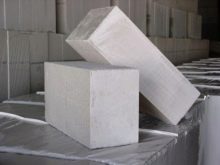
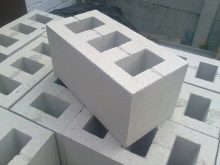

Calculation of materials
Everything must be thought out. From everything that came to hand, a bath cannot be built - special materials are needed. Therefore, it is necessary to keep records of them and draw up an estimate, calculate the approximate cost of construction in order to know how many cubic meters of wood were brought in.
It is easiest to ask for help from specialists, but you can try to do the calculations yourself.
What materials are considered:
- for roof and walls (rafters);
- for the floor;
- ceiling and interior decoration;
- insulation (water and steam);
- for insulation;
- roof.
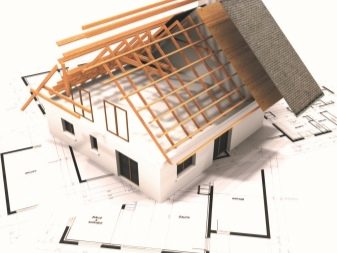

An individual estimate is drawn up depending on the specifics of the bath project, square meters and the materials used. A competent and responsible approach to the construction of a bath helps to keep the budget and acquire a durable and strong bath.
There is a little trick: for the construction of a frame bath, you can order a ready-made kit for self-assembly.

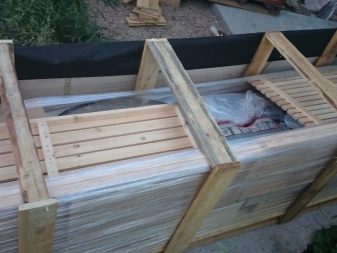
Design
The interior and exterior of the bath depends entirely on the will, taste and imagination of the owner. You can make a classic Russian bathhouse, creating the atmosphere of the past from within, while feeling like a rich gentleman in the middle of birch brooms and a tree. For example, traditional designs can be supplemented with wrought iron and iron elements, herbs hanging from the ceiling and walls, stylistic utensils such as wooden ladles and basins.
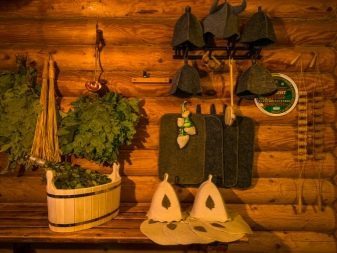
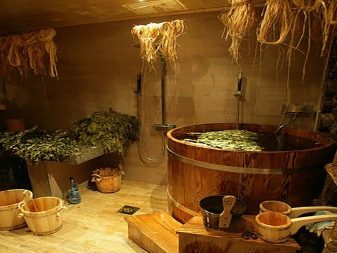
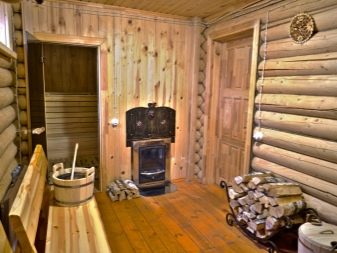
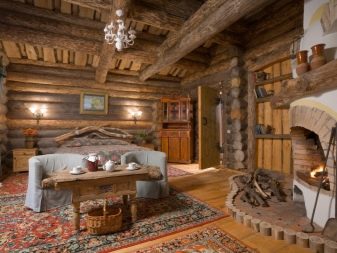
The main rule of the interior decoration of the bath is calmness and relaxation. In a place of relaxation, no one will like pretentious forms and bright, flashy colors - it is better to refuse such crazy ideas. And you should give preference to calm natural shades that will help you relax and not pay attention to the environment. After all, when visiting a bath, the main thing is comfort and relaxation, and the eyes very often remain closed.
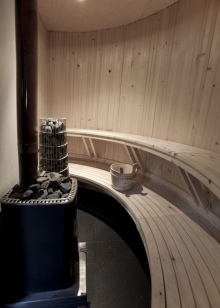
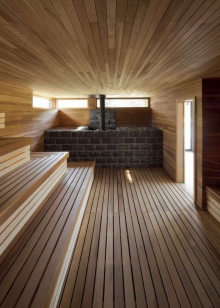
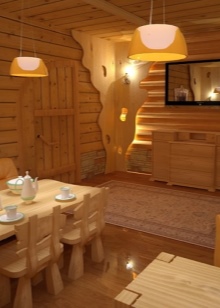
The light should be slightly dim and warm, soft and diffused. But at the same time, you should not arrange twilight - in it the eyes strain harder, and this does not dispose to rest.
A modern bathhouse gives room in the choice of solutions and design, however, it is better not to overdo it with originality, and to do everything simply, in calm colors, but with taste, and then the guests will definitely appreciate the decoration of all the rooms in the house.

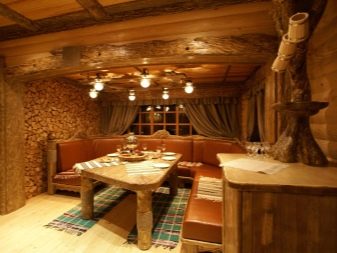
Tips & Tricks
For the correct placement of the bath complex, you can use the advice of specialists.
- It is better to place the bath on a hill, which will help to equip a natural drainage system.
- It is better to enter the entrance from the south, especially if you plan to take a steam bath in winter - so there will be less snow.
- And the windows are from the west or southwest.
- The distance from the house is about 5-6 meters according to fire safety rules.
- But not on the border of the site to avoid prying eyes.
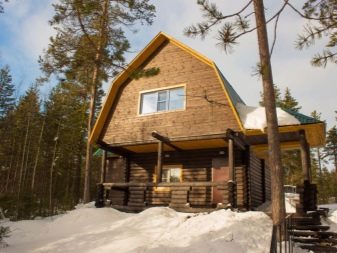
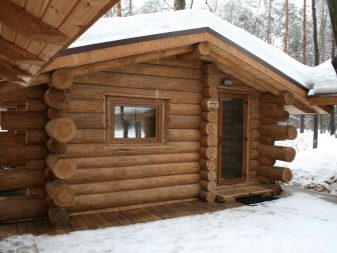
Beautiful examples
And here are some good examples of a 4x6 m sauna that can inspire you to create your own unique sauna.
- The same traditional style in a gas block bath.
- An example with a lot of smooth lines.

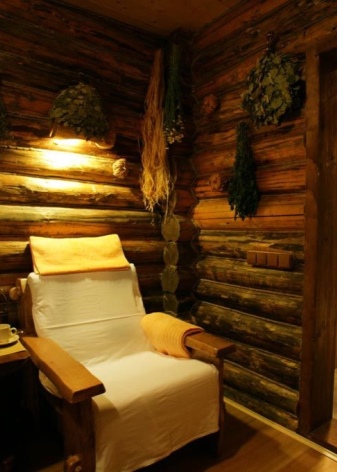
- A log bathhouse with carved details and even stained-glass windows.
- A wooden steam room with a panoramic window looks very interesting.
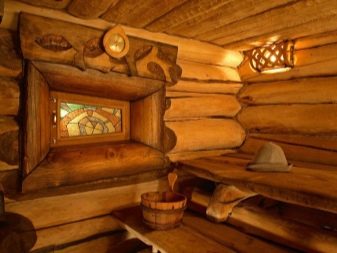
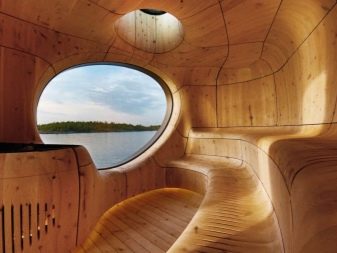
For how a compact bathhouse made of a profiled timber with a 4x6 attic looks like, see the next video.




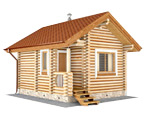
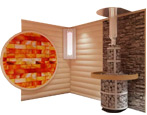
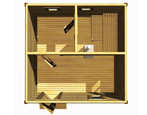
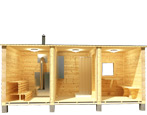
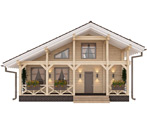
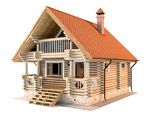


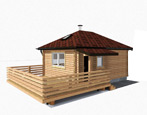
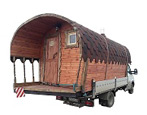


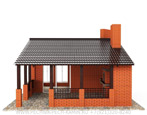

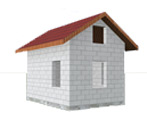

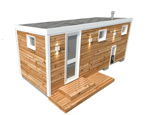
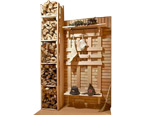
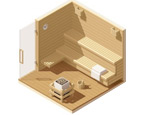
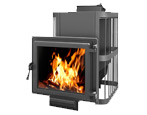
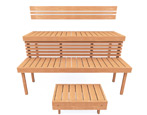


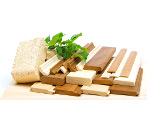


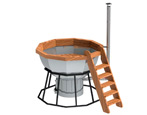
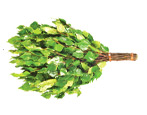
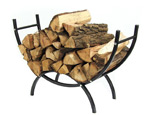
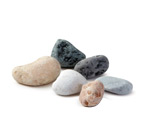
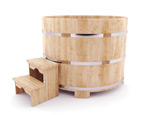
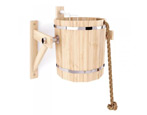
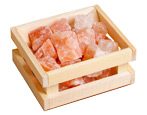

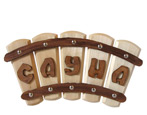
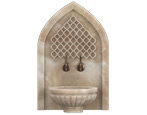

























































The comment was sent successfully.